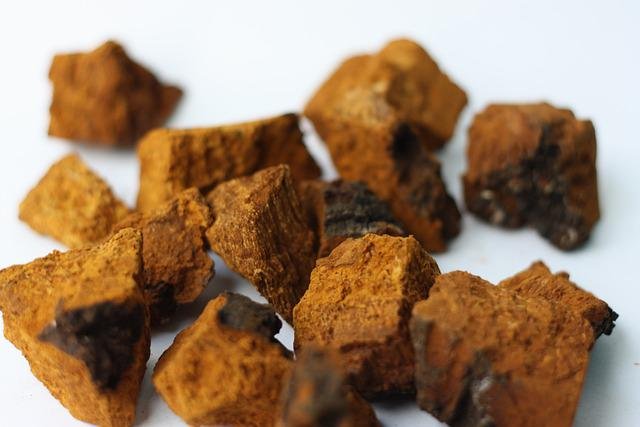
Chaga is a mushroom with incredible properties, almost as much as its history. The discovery of the effects and beneficial properties of this mushroom for human health date back to the 1950s, in Russia, thanks to the Soviet doctor who was the first to investigate its therapeutic properties.
From that moment, the experimentation on human beings continued incessantly, above all to give a scientific basis to the alleged anti-cancer properties of the Chaga hypothesized. About 1,000 patients with cancer of various stages were studied and treated with a combination therapy that also included Chaga extract.
In many cases, the treatment has proved useful to improve the psychophysical well -being of the patient and to slow down the spread of the cancerous process.
Let’s get to know this mushroom better and let’s investigate its characteristics and uses more closely.
Chaga mushroom
Chaga, whose botanical name is Inonotus obliquus, is a mushroom that grows in the wild on the birch bark. It is typical of high latitudes such as those of North America, Siberia, Northern Europe and Asia. In nature, it has an irregular appearance and shape, dark in color, almost burnt. Sometimes it also appears on the trunk of beeches, alders, oaks and poplars.
In unsuspected times, Siberians and Canadians were already using it as an elixir of life, strength and for the treatment of various types of cancers.
This medicinal mushroom became popular in the West with the publication of the autobiographical book written in the late 1960s by Nobel laureate. In their writing entitled “Cancer Pavilion”, they narrates their recovery from cancer thanks to the decoction of Chaga.
Chaga: ownership
Known by the Siberians as “God’s Gift”, the Chaga mushroom is a medicinal mushroom with countless beneficial properties.
Its therapeutic abilities are also documented in the ancient Chinese medicine textbook which has more than 2300 years of history behind it. Numerous scientific studies have shown its beneficial effects on health. Among its components to which the main beneficial activities are connected, we find a high concentration of phenols, melanin, vitamin D, betulinic acid, ergosterol, polysaccharides, triterpenoids.
Betulinic acid, in particular, is an exceptional natural active ingredient against cancer. It helps to preserve healthy cells by eliminating only cancerous cells and acts on the latter in a “selective” way, counteracting their spread.
Its extract is the basis of many chemotherapy treatments, also useful for reducing the side effects of chemotherapy treatment and for reactivating the immune system. Several studies are underway aimed at identifying how to maximize the benefits.
Clearly, it is not intended as a substitute for traditional therapies.
Chaga mushroom: therapeutic uses
In traditional medicine, the Chaga mushroom has been used to treat:
- heart disease
- diabetes
- liver disease
- parasites
- intestinal worms
- stomach ache
- some types of cancer
This mushroom is used for the treatment of joint pain, to soothe states of psycho-physical stress and fatigue and counteract cellular aging.
Thanks to its anti-inflammatory properties, it is also recommended for the treatment of Crohn’s disease and in case of ulcerative colitis.
Chaga mushroom: how to take it
Chaga mushroom is easily purchased online and in herbalist’s shops. In the most common phytotherapeutic solutions it is available in the form of supplements, capsules and organic powder.
The average intake typically includes 1 teaspoon of powder per day alone or dissolved in tea or smoothies. The mushroom, in fact, is completely soluble in water so it is absorbed by the body quickly and optimally.
Chaga: contraindications
Chaga mushroom is one of those natural products suitable for everyone as it does not contain any substances that are harmful to humans. Furthermore, its components do not accumulate in organs and tissues, therefore they are unlikely to give rise to side effects or alterations in the long term.
However, there are some contraindications that absolutely must be pointed out. In fact, Chaga should not be taken by children under the age of 7 and in case of:
- pregnancy
- liver dysfunction
- hypersensitivity
- dysentery
- intestinal dysfunctions.
The possible side effects related to its use in these situations are:
- Allergic skin reactions
- Disorders of the digestive system
- Diarrhea
- Nausea
- Anxiety
- Insomnia
- Excitability of the nervous system
If during prolonged intake one or more symptoms of this type should occur, it is advisable to stop treatment immediately and contact your doctor.






